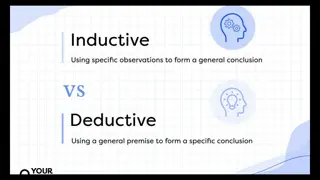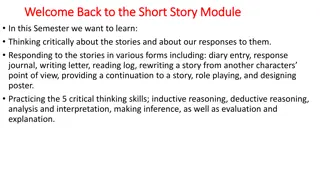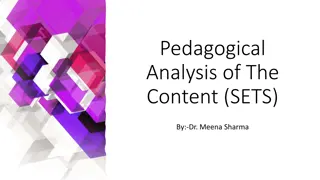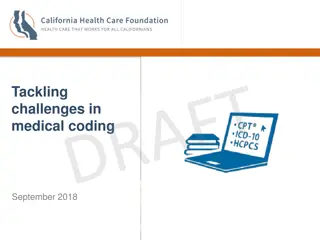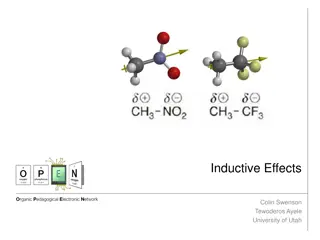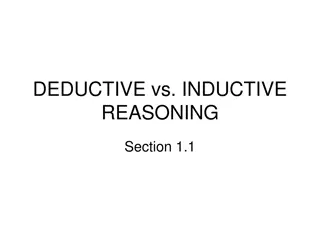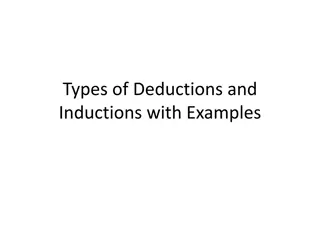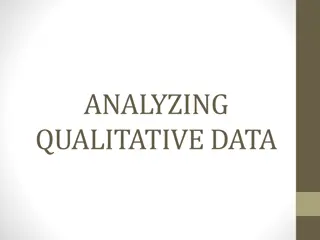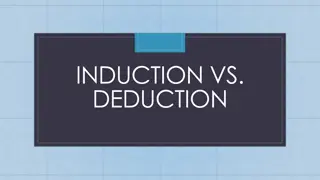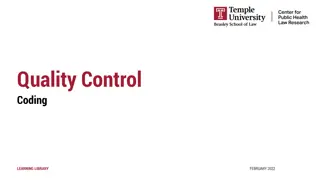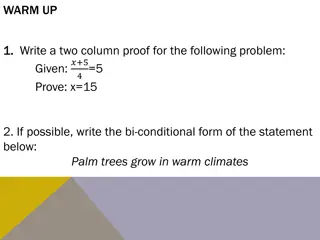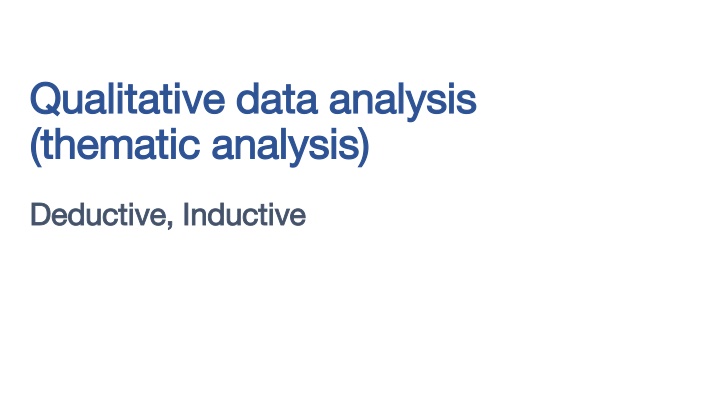
Understanding Data Analysis through Thematic Coding
Learn about deductive and inductive coding in qualitative data analysis through thematic analysis methods. Explore the steps involved in coding and analyzing real data examples. Discover standout features and ideas in the analysis process.
Download Presentation

Please find below an Image/Link to download the presentation.
The content on the website is provided AS IS for your information and personal use only. It may not be sold, licensed, or shared on other websites without obtaining consent from the author. If you encounter any issues during the download, it is possible that the publisher has removed the file from their server.
You are allowed to download the files provided on this website for personal or commercial use, subject to the condition that they are used lawfully. All files are the property of their respective owners.
The content on the website is provided AS IS for your information and personal use only. It may not be sold, licensed, or shared on other websites without obtaining consent from the author.
E N D
Presentation Transcript
Qualitative data analysis Qualitative data analysis (thematic analysis) (thematic analysis) Deductive, Inductive Deductive, Inductive
Introduction Introduction To understand and practice the different steps to coding and analysing qualitative data using thematic analysis methods. Session 1: Deductive and inductive coding with real data examples. Session 2: Generating themes from coded qualitative data.
Objective of todays session Objective of today s session To review the different steps in analysing qualitative data using thematic analysis. To apply deductive and inductive coding to real data examples.
Steps of thematic data analysis Steps of thematic data analysis - - and how/where do we adapt for RQA how/where do we adapt for RQA and Step 1: Step 2: Coding Step 3: Transcription and translation Generating themes Step 4: Step 5: Prioritising key findings and writing up themes Using themes and key findings as an evidence base
Coding Coding A code is usually a word or a phrase representing a recurring idea or feature in the data. Coding can be done in a Word document, an Excel spreadsheet or qualitative analysis software, or even paper and pen. The approach to coding depends on the amount and type of data you need to analyse, how specific the question is that you want to explore, as well as your preferences as the analyst.
What are some standout features or ideas? What are some standout features or ideas? We are exploring risks faced during the displacement journey People migrated from the settlement to Landheer, Shinbirale, Qaloocan and Shandheeye villages under Buhodle Ethiopia region to find water and land for animal grazing. Hunger and thirst is what we mostly faced during the migration process as there was nowhere to buy food and we had not brought enough supplies. We also feared getting caught up in the war that is going on. Women and children were most affected because they are physically vulnerable. Pregnant women in particular, as they could not move well or quickly. Some gave birth on the journey with no midwife or hospital. Oftentimes, families were splitting up because they could not all move safely together at the same time.
Codes and sub Codes and sub- -codes codes Vulnerability of pregnant women VPW Code Poor access to maternal healthcare MHC Women are less mobile when pregnant LM Sub-Code
Deductive vs. inductive coding Deductive vs. inductive coding Means you do not have any pre-defined codes but create the codes as you read through the data. This method can be useful if your research question is broader, and you adopt an exploratory approach and do not want to be influenced by pre-conceived notions of what might be the most important themes. INDUCTIVE CODING Means you create a pre-defined set of codes before starting your analysis. This can be useful if you already have a good idea of the questions and/or ideas that you want to explore. DEDUCTIVE CODING It is possible to use a mix of deductive and inductive coding
KII Research topic: adolescent health Location: Fara Village in Bagara, Somalia Participant: Fara village chief (FC) Coding in a Word document
Codebooks Codebooks What is a code book? Why use a codebook? Inductive coding - develop the codebook as you go Deductive coding - prepare the codebook before you start your analysis. Or a combination approach
Top tips for coding Top tips for coding Code as many interesting ideas/features as possible - you never know what might be of interest later on. It is ok to code a word, a few words or a sentence it will vary! Code also the surrounding text so you don t lose the context of the extract. You can code the same data extract many times if it fits with several codes. You will code ideas that are common across the transcripts, but don t lose sight of the uncommon/outlying ideas too.
Importance of quality data Importance of quality data What type of data do you usually collect? What are some of the challenges to getting the right amount and detailed data? What needs to be done to address this?
Practical exercise Practical exercise Coding your data - inductive coding - using RQA data (can use either Word or Excel)

